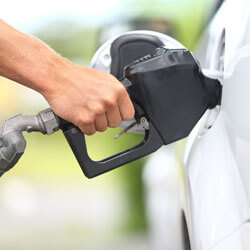 The price of gas is a constant concern for drivers, but is it a big enough concern that it affects the type of vehicle buyers choose to purchase? What about changing how you drive so that you're squeezing every last drop of gas to its fullest potential?
The price of gas is a constant concern for drivers, but is it a big enough concern that it affects the type of vehicle buyers choose to purchase? What about changing how you drive so that you're squeezing every last drop of gas to its fullest potential?
High gas prices mean rethinking the next auto you buy
Gas prices and their potential influence on the vehicle purchasing habits of Canadians is significant. Back in June 2004, Leger Marketing out of Montreal surveyed Canadians across the country and 66 per cent of us told them that the recent hikes in gas prices will influence the type of vehicle we will buy in the future. Given that the average retail price of regular gasoline back then hovered well under a dollar per litre (81.4 cents per litre), the study is likely as relevant today than ever.
According to Natural Resources Canada the following is the average retail price for regular gasoline in Canada:
- 2016 (thus far) - 99.9 cents per litre
- 2015 - 108.9 cents per litre
- 2014 - 128.1 cents per litre
- 2013 - 127.9 cents per litre
- 2012 - 127.5 cents per litre
- 2011 - 124.0 cents per litre
Given the wild fluctuations of the price of regular gasoline in Canada, it's no wonder people are looking to make their driving habits and cars more fuel-efficient.
Fuel-efficient driving tips
The way we drive often impacts how efficiently the car runs. The following fuel-efficient driving compiled from a variety of sources will help you get the most out of your car:
- Plan your trips so you're not criss-crossing all over town while running errands.
- Avoid hard, fast acceration and hard braking. Studies have shown this style of aggressive driving increases fuel consumption by 37 per cent.
- Use your cruise control on the highway if the landscape is relatively flat.
- If hilly however-and if traffic conditions allow it-turn off the cruise control and let gravity do the work for your engine; allow your speed to drop when going uphill, and when going downhill let it pick up your speed naturally (don't exceed the limit, of course, as this could could you in other ways-tickets, increased insurance costs.)
- Don't drive with your left foot on the brake pedal. Not only does this increase fuel consumption, but your brake lights are always on and drivers behind you have no way of knowing when you actually apply the brakes to slow down or stop.
- Avoid unnecessary idling.
For more tips fuel-efficient driving tips, read Gas Prices Driving You To Walk? Fuel Savings Tips
Save money on fuel AND auto insurance rates
If, in addition to driving with fuel-efficiency on your mind, you are also thinking about getting a gas-friendly auto next time around, you'll likely enjoy savings when it comes to the cost of auto insurance too. Often fuel-efficient vehicles are less expensive, physically smaller in size, with smaller engines and less horsepower. Generally speaking, these types of autos are also less expensive to insure.
Compare car insurance quotes and see if your auto insurance could be cheaper with a vehicle that is fuel-efficient. You could be saving money both with the decreased amount of gas you'll need and your auto insurance premiums!>
Looking for more on fuel efficiency, cars and auto insurance rates?
Over the years, Kanetix.ca has compiled a series of articles you might find of interest:




